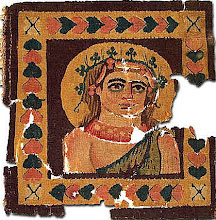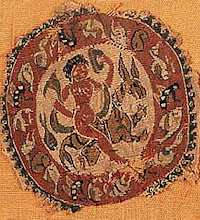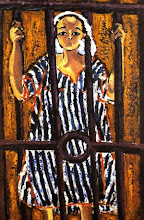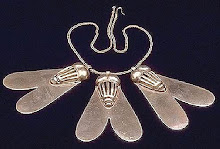Ready for an adventure, I take a metered taxi to the HSBC bank to get my ATM card. I'm early, the bank doesn't open untl 9:30 am. But no, the bank is closed today and open tomorrow. Oh well, it was a 5 LE trip. So I look for another meter taxi and off I went. But, you guessed it, my taxi driver spoke not a lick of English and had no idea how to read the map I showed him. When I said Marriott, I thought surely everyone knows the Cairo Marriott. Evidently not. I even had my handly compass out knowing that we were supposed to go south. After a 5 LE fare, we were back where we started and he acted like it was all new to him. Getting more exasperated by the minute, I made him stop for directoins. He finally dropped me off at the other side of the Marriott. Shayma was coming and I didn't want to be late for her. Although the meter showed 12 LE I gave him 5 and said that's all you get. It was so irritating but then I thought, yes well, you sometimes get so lost in Philadelphia that you enter a time warp of altered dimensions. Maybe I should give him the benefit of the doubt. However this is me thinking many hours later. I was only 5 minutes late even after circling Zamalek for half an hour.
But the real adventure begins when we embark on our journey to Wissa Wassef around 10 am. First a meter taxi to Sadat Metro Station - only 1 LE each and it take far less time than a taxi since we will be going to the Giza Station Metro. We take the women's car which is clearly marked (in case you can't read Arabic) in red with the symbol of a woman in a skirt. Very clean station and car, not like you might encounter in other places like New York or some parts of Paris. We then take a microbus - another first for me. Luckily, the bus isn't too crowded and it is only 3 LE for both of us. We get to a halfway area (toward Saqqara) before we transfer to another microbus which will take us to the village of Harrinayya. After that, it is a short walk to the Art Center.
We are greeted by Alfons, one of the art center's managers who is a wonderful guide and storyteller of this amazing complex. It started around 1953 as the dream of Ramses Wissa Wassef and his wife Suzanne to provide a creative outlet and minimal training in weaving to children of the village, particularly young girls. It is a mud brick complex with open studios. The women (primarily) who work there have keys to the loom rooms so they can set their own hours since most are housewives with families to take care of as well. In addition to wool/cotton tapestry weavings and cotton/cotton weavings, other studios are devoted to batik painting and pottery. Suzanne Wissa Wassef is a potter, she has one assistant handling the clay preparation and making glazes. Other than that, she creates all the plates, vases, and other items for sale. I set aside two coffee mugs made of Nile clay from Aswan with blue and white markings.
Alfons takes Shayma and myself on a tour of the studios where we meet a total of six women and one man. Most are second generation weavers. Do do meet a first generation weaver who started in 1954 at the age of eight. Another woman started in the 1960s at the age of fourteen. Their work is astonishing, woven sideways on the looms in designs that are entirely freehand. The weavings are created with yarns dyed in natural colors. In fact, Alfons went to the garden and dug around to show me the rose madder root used to create deep reds and softer oranges. Most of the colors are grown in the complex gardens - Ramses Wissa Wassef wanted his studios to be self sufficient. Only indigo and cochineal are imported. However, the dyes used for the batik work are chemical dyes that can be used in cold water because of the process involved. Even the batik work is free hand with designs "drawn" in hot wax on the raw material of cotton which comes from Egypt. Silk isn't used because it is not native to the country.
Saturday, September 12, 2009
Subscribe to:
Post Comments (Atom)


































































No comments:
Post a Comment